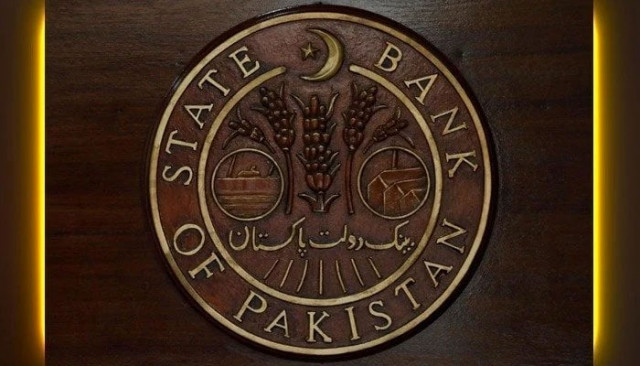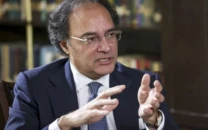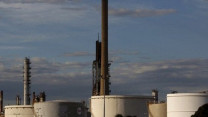SBP faces dilemma over interest rate
Experts split as decision looms on whether to cut or maintain record high rate

Pakistan’s central bank is scheduled to meet on Monday to determine the benchmark interest rate for the next six weeks. It will be a highly tricky meeting with almost half of the financial experts and key investors betting on the bank cutting the rate, while the remaining half believe the financial regulator will leave the rate unchanged at the prevailing record high of 22%.
The arguments on both sides of the fence agree on one key point: the real benchmark policy rate (traditionally called the real interest rate) stands significantly positive (5-6 percentage points) on a 12-month forward-looking basis, as the inflation reading is projected to decelerate to 16-17% in December 2024. The real rate will also turn positive on a spot basis this month when the benchmark inflation reading (consumer product index/CPI) is estimated to slow down to 20-21% in March 2024, making the real interest rate positive by 1-2 percentage points.
Earlier, the central bank had adopted a forward-looking approach to control inflation, raising the policy rate cumulatively by 15 percentage points between September 2021 and June 2023 to 22%. Recent decisions indicate that the bank has become overcautious on inflation under the International Monetary Fund loan programme, closely monitoring datasets and apparently abandoning the forward-looking approach.
Those who believe in a rate cut on Monday argue that the high interest rate is taking a heavy toll on economic growth. The high interest rate has squeezed the financial space of the government, leaving almost no funds with the federal government after paying interest on the total debt. Estimates suggest that a one percentage point hike in the policy rate increases interest payments by Rs200-250 billion by the federal government in Pakistan.
The high interest rate has strained the balance sheets of businesses, requiring them to restructure debt with banks. Additionally, demand has been severely suppressed for products like cement, fertiliser, petroleum products, electricity, and cars.
The other side argues that the bank will maintain the rate at an all-time high as the government negotiates with the IMF for the last tranche of $1.1 billion and for securing a new package – larger and longer – by the time the ongoing $3 billion programme ends in March-April 2024.
The IMF recommends that the SBP maintain a tight monetary policy but does not dictate what interest rate makes the policy tight or soft.
In their surveys of key investors including bankers, industrialists, manufacturers, and mutual funds, Topline Research found that 55% estimate no rate cut in March, while 45% believe in a cut in the rate of 25 basis points to over 100 basis points. The research house itself stands in the majority camp.
Read: Interest rate status quo
Arif Habib Limited’s survey suggests that 53% of respondents see no rate cut, while the remaining 47% anticipate a cut in the range of less than 100 basis points to 200 basis points. AHL itself foresees a 100 basis point cut on Monday.
Treshmark projects the SBP to cut the policy rate by 100 basis points as aggregated demand in the economy is significantly down, the current account deficit is well-contained, the rupee is rising against the dollar, the political environment is much better, and the business community is being stretched by substantially higher financing costs.
Optimus Capital Management’s Head of Research, Maaz Azam, expects a cut of 100 basis points. He said downward revision is expected as the economy has slowed significantly, and with depleted purchasing power, any notable uptick in demand seems unlikely.
Moreover, the current account deficit (CAD) is expected to remain contained despite lifting LC (import) restrictions. Although headline inflation appears inflated, it has sharply decreased, with March 2024 inflation expected to be around 20%, and core inflation has subsided as well and is expected to be around 16% in Mar-24.
“The IMF review should not be a hurdle as the real interest rate will be positive on both a spot and forward-looking basis,” Azam said.
AHL says a data-driven approach will be pivotal in forming the SBP’s decision-making process. This approach would likely take into consideration the downward trajectory of both headline and core inflation, which it anticipates to average approximately 17% and 15% respectively (on a 12-month forward basis), resulting in significantly positive real interest rates on a forward-looking basis. “This aspect was also underscored in the SBP’s previous MPS (monetary policy statement).”
Several contributing factors, including the substantial base effect, stabilisation of global commodity prices, support from the stability of the rupee against the US dollar, and efforts to curtail the current account deficit, underpin expectations for the rate cut.
Topline Research believes that the SBP will remain cautious despite encouraging trends and adopt a ‘watch and see’ approach until the inflation trend maintains its fall, meaning no change in the policy rate on Monday.
“Key risks to the inflation trajectory include delay in the release of IMF funds, IMF demanding additional tax measures to meet revenue target in case of any shortfall, and pressure on the dollar against the rupee mainly due to delays in getting dollar inflows,” it said.
Published in The Express Tribune, March 17th, 2024.
Like Business on Facebook, follow @TribuneBiz on Twitter to stay informed and join in the conversation.



















COMMENTS
Comments are moderated and generally will be posted if they are on-topic and not abusive.
For more information, please see our Comments FAQ